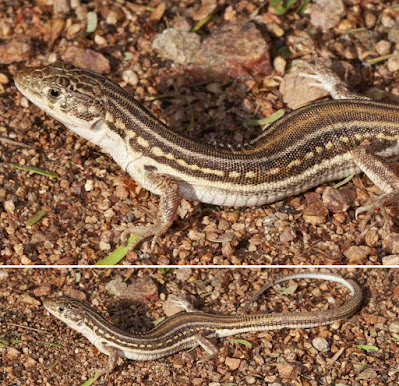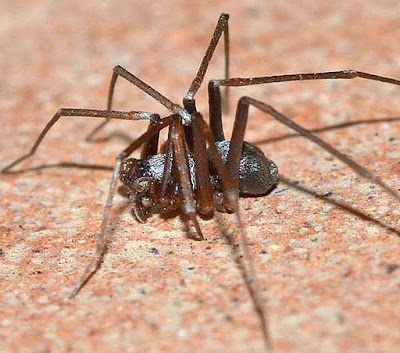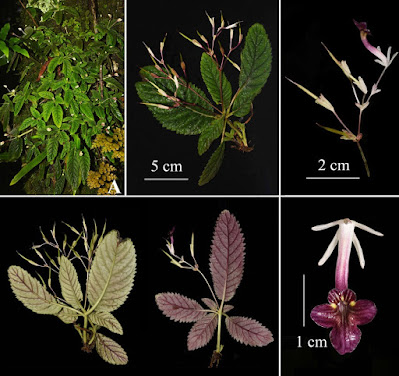[Most Recent Entries] [Calendar View]
Monday, January 4th, 2021
| Time | Event | ||
| 2:40a | [Herpetology • 2020] Nucras damarana • A Reevaluation of Records of Sandveld Lizards, Nucras Gray, 1838 (Squamata: Lacertidae), from northern Namibia
Abstract Data relating to the Sandveld lizards (Nucras) occurring in Namibia, southwest Africa are reviewed. In particular, we investigated records of N. holubi, a chiefy southeastern African species, and attempted to identify recently collected material that could not be assigned to any species currently recognized in Namibia. A phylogenetic analysis of Nucras based on three mitochondrial markers revealed a deep divergence between Namibian Nucras holubi and two presumably conspecifc clades from Limpopo Province, South Africa. In addition, the coloration pattern and scalation of the Namibian material difer from those of the eastern forms, supporting its recognition as a separate species. The name Nucras damarana Parker, 1936, long relegated to the synonymy of N. holubi, is here resurrected for this apparently endemic northern Namibian species. Nucras damarana is restricted to the Kunene, Omusati, Oshikati, Kavango, and Otjozondjupa regions of north-central Namibia. A distinctive specimen of Nucras from near Ruacana in the Kunene Region was identifed as allied to Nucras broadleyi, a species recently described from southwestern Angola, on the basis of genetic data, although it difers substantially in color pattern. With the addition of N. af. broadleyi and the resurrected N. damarana to its fauna, as well as the removal of N. holubi from the nation’s species list, four species of Nucras are confrmed to be present in Namibia. Although the conservation status of N. damarana, N. tessellata, and N. intertexta is Least Concern, the uncertain taxonomic status of N. af. broadleyi precludes a meaningful threat assessment. Keywords. Distribution, endemism, Nucras damarana, Nucras broadleyi, Nucras holubi, phylogeny, taxonomy Nucras damarana Parker, 1936 Diagnosis. A small Nucras (maximum 57.6 mm SVL) with eight longitudinal series of enlarged ventral plates, a series of small granules between the supraoculars and supraciliaries, occipital scale reduced or absent, and enlarged plates on the underside of the forearm. Adult dorsal color pattern characterized by three distinct pale longitudinal stripes extending from the nape to the tail base, an additional pale stripe at ventrolateral margin of fanks, fank markings comprise spots or horizontal dashes typically in a single line, and tail not brightly colored (Figs. 3A, 4A). .... Distribution. Nucras damarana has a broad distribution across northwestern Namibia, including the Kunene Region (exclusive of the Namib and pro-Namib in the west), as well as the Omusati, Oshana, and Oshikoto Regions and in the northwest of the Otjozondjupa Region (Fig. 5). Although unsupported by vouchers, it is likely to be present in the Ohangwena Region and into the southern Angolan Cunene Province. Natural history. Parker (1936) recorded Nucras damarana only from Sessekab, which he described as “open forest.” The species occurs in several of the major landscape divisions of Namibia, including the Kalahari Sandveld, Kunene Hills, Cuvelai System, Central-western Plains, and Kamanjab Plateau, and spans a broad annual precipitation gradient from 150 mm in the west to approximately 500 mm in the east (Goudie and Viles 2015). Its distribution falls entirely within the Tree and Shrub Savanna biome, with the majority of localities within areas characterized as woodland, but extending into areas of sparse shrubland (Atlas of Namibia 2002). Nucras damarana is an uncommonly encountered terrestrial species, usually found in relatively mesic microhabitats in areas with at least some vegetation as ground cover. Although the diet has not been studied in this species, most congeners have a broad diet of arthropods including various insects, spiders, and centipedes (van der Meer et al. 2010), and this is likely the case for N. damarana. Aaron M. Bauer, Matthew Murdoch and Jackie L. Childers. 2020. A Reevaluation of Records of Sandveld Lizards, Nucras Gray, 1838 (Squamata: Lacertidae), from northern Namibia. Amphibian & Reptile Conservation. 14(3); 231–250 (e271). | ||
| 3:22a | [Arachnida • 2020] Three New Species of the Genus Ranops (Araneae: Zodariidae) from southern Africa
Abstract The genus Ranops Jocqué, 1991 was only known from three species so far. Three new species of the genus are described here: Ranops robinae sp. nov. (♂♀) from South Africa, R. tharinae sp. nov. (♂♀) from Botswana, and R. wandae sp. nov. (♂♀) from Namibia. Its distribution is discussed and a distribution map for all the Ranops species is provided. Ranops expers (O.P. Cambridge, 1876) does not belong to Ranops and is transferred back to Zodarion Walckenaer, 1826. Keywords: Araneae, ant-eating spiders, arid corridor, distribution, outliers, taxonomy Ranops robinae Rudy Jocqué and Arnaud Henrard. 2020. Three New Species of the Genus Ranops (Araneae: Zodariidae) from southern Africa. Zootaxa. 4899(1); 186–200. DOI: 10.11646/zootaxa.4899.1.10 | ||
| 3:52a | [Botany • 2020] Didymocarpus longicalyx (Gesneriaceae) • A New Species from southwestern Yunnan, China
Abstract Didymocarpus longicalyx, a new species of Gesneriaceae from southwestern Yunnan Province, China is described and illustrated based on detailed morphological comparisons with all known species of the genus Didymocarpus from both China and neighbouring countries. Morphologically, it is most similar to D. medogensis and D. glandulosus, but can be distinguished by its puberulent peduncles, calyx with ca. 8 mm long segments and claret corollas with three yellow spots and a few yellowish striations on upper lip. Keywords: Didymocarpus, flora of Yunnan, Gesneriaceae, new taxon, taxonomy, Eudicots Didymocarpus longicalyx G.W. Hu & Q.F. Wang Cai‐Fei Zhang, Jing Tian, Shuai Peng, Jun‐Jie Wang, Yan Wang, Guang‐Wan Hu and Qing‐Feng Wang. 2020. Didymocarpus longicalyx (Gesneriaceae), A New Species from southwestern Yunnan, China. Phytotaxa. 475(1); 59–66. DOI: 10.11646/phytotaxa.475.1.6 |
| << Previous Day |
2021/01/04 [Calendar] |
Next Day >> |









